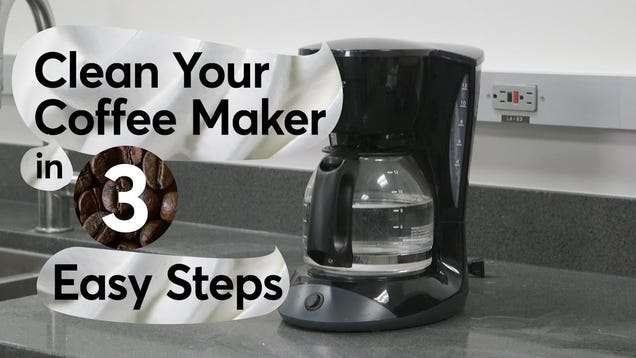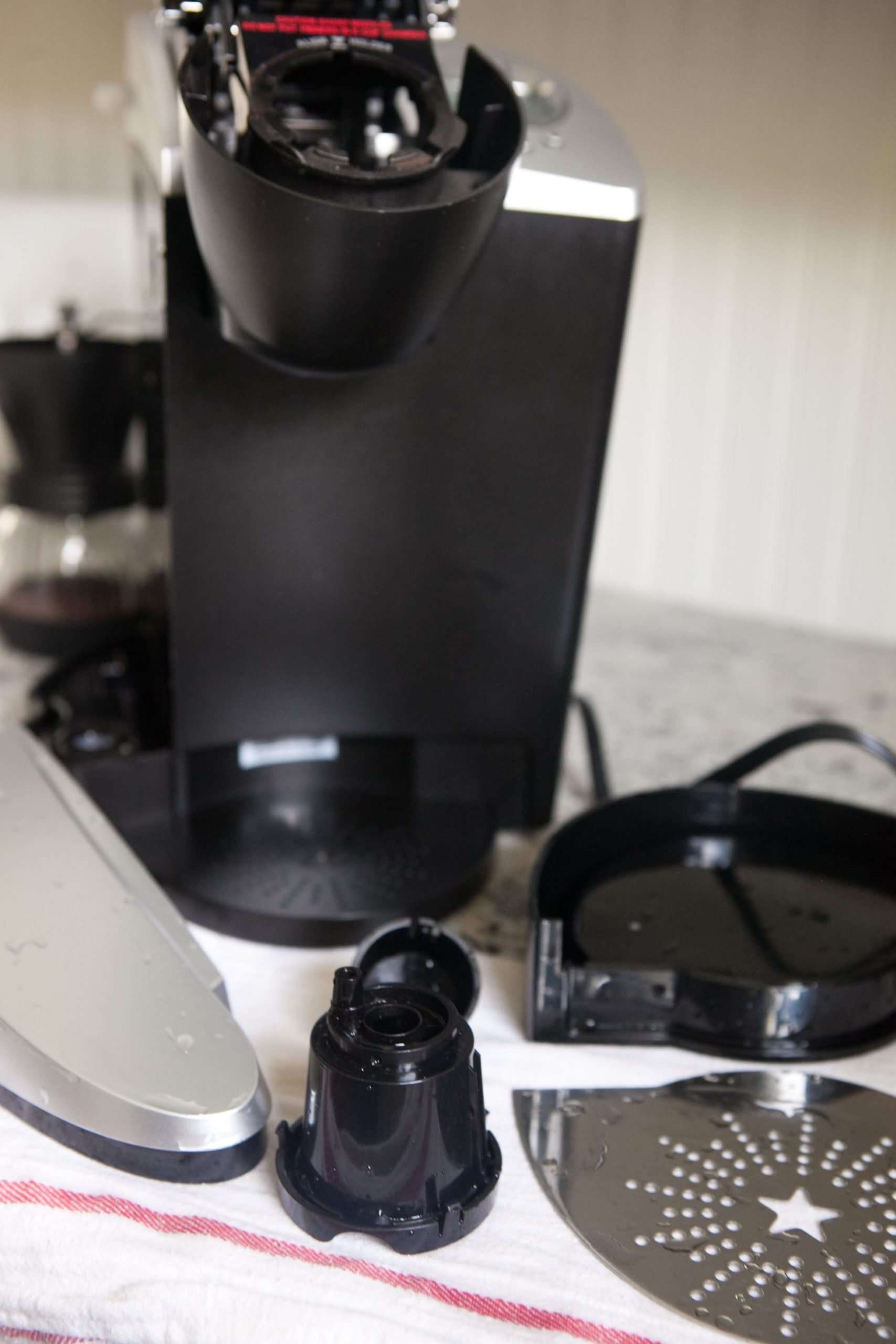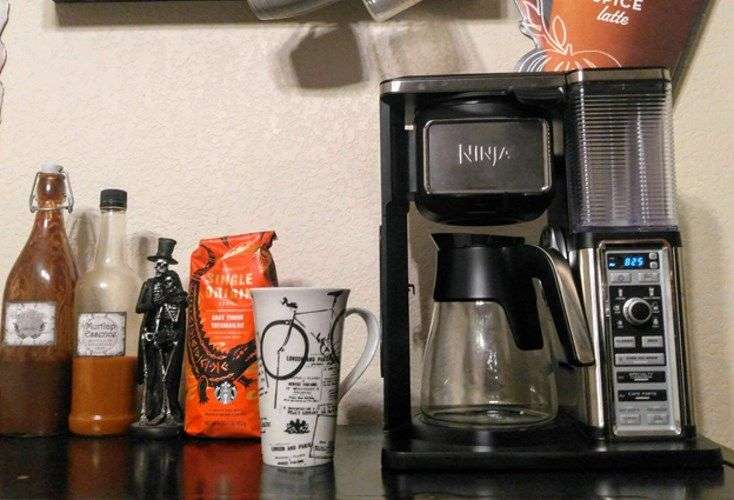Does Baking Soda Get Rid Of Stains In Coffee Pots
The abrasive nature of baking soda means that it scrubs off build-up and residue that gets stuck to your coffee maker. It can also dissolve oils from your coffee beans that build up in your coffee machine.;
These oils can stain the coffee maker and carafe, and you can use a paste made from baking soda to clean these stains.
Best Water Filter For Your Espresso Machine
Aside from maintaining a regular descaling cycle, it is always a good idea to filter the water that you put in your machine. You can purchase filters that fit directly in the water reservoir and operate similar to a Brita filter system. JURA has several varieties of filters that can be used in their machines. Please consult with your machine’s manual before purchasing a water filter to ensure that you select the correct style.
The Mavea Intenza water filters can be used in most Gaggia and Saeco semi-automatic machines. These filters can be found in the parts and care section of our site. Please refer to your users manual when choosing the proper filter for your machine or contact us so we can assist.
Cleaning Your Cuisinart Coffee Maker
Whether you brew your coffee with tap or bottled water, you cannot escape mineral buildup. That calls for a proper descaling technique to prolong the life of your beloved Cuisinart maker.
But despite a thorough cleanup, your Cuisinart machine craves love, proper care, and regular rinsing. Want to avoid making a costly mistake and find the ideal way to;clean and maintain your coffee maker? Youve come to the right place!
You May Like: Is Decaf Coffee Good For Constipation
Cleaning Your Auto Drip Coffee Maker: Step By Step
What you will need
- Some paper coffee filters
- Water
Step 1: Brew some vinegar
With an empty pot, coffee filter, and water reservoir, fill a pots worth of vinegar into your coffee makers reservoir, and start brewing as you normally would.
Once your coffee pot is full of hot vinegar, pour that down your drain.
Step 2: Brew some water
After you have poured the vinegar out, refill your reservoir with a pot-full of water.
Brew the water, pour it out, and then repeat one more time.
Step 3: Start brewing coffee again
Yep, thats it! Your coffee maker should now be delivering like it always did.
No more bitter coffeeat least for a month. Remember to clean your coffee maker next time and you will be making great-tasting coffee for years to come.
Puracy Natural Dish Soap: Powerful Concentrated Safe

In just a few simple steps and Puracy Dish Soap ; youll have a clean machine thats ready to brew rich, great-tasting coffee. Plant-based, 99.96% natural, and super concentrated, this is a safe choice for tackling stains on all of your dishes, utensils, glassware, pots, pans, and much more.;
Shop this article
Natural Dish Soap
Powerful & concentrated to do more cleaning with less. Safe & naturally-derived, leaving hands soft and dishes sparkling, no gloves required.
You May Like: Caramel Ribbon Crunch Frappuccino Venti Price
How To Clean A Coffee Maker With Vinegar
Follow these simple steps for cleaning an auto-drip coffee maker for a germ-free home brewer and a fresh tasting cup of joe.
For many, a daily run to the local coffee shop has become a cherished morning routine. But costs for that store-bought brew can add up quickly. And when getting out isn’t possible, nothing can be more convenient than a morning walk to the kitchen for that cup of just-right joe.
How To Descale Your Automatic Coffeemaker And Why You Should
Liz ClaytonWhere to Drink Coffee Nice Coffee Time New York Coffee Map 2015Editorial Process
Some automatic coffeemakers can make a great pot of coffee. But did you know that the coffeemakers’ success relies, in large part, on your partnership? For all your fancy coffeemaker does for you each day, do you give back? Do you listen to its needs? Do you, in fact, descale?
What now? That’s right: water, though your friend and ally in all things life and coffee, can be a menace to any coffee brewer, affecting both flavor and performance as it leaves a slow buildup of deposits in the machine over time.
Impurities in water, and use of harder waters, can result in calcification and buildup on interior components of your coffee machine that affect taste. Can’t picture it? If you’ve ever used an electric kettle with a visible heating coil, over time, you’ll have noticed a white, scaly build-up. Look like something you’d imagine tastes delicious? Not so much.
While each brewer may have its own recommended method for descaling, the principles remain the same. “I think everyday cleaning and upkeep is something that people are bad at,” says Urban Eisley, manager at New York City’s Joe Pro Shop. For those who use their automatic drip machines daily, Eisley suggests a thorough descaling once every six months to a yeardepending on how much you brew and how challenging your water is.
Thank yourself later over a delicious, even-more-flavorful-than-before cup of coffee.
Don’t Miss: Does The Caramel Ribbon Crunch Frappuccino Have Caffeine
Using Vinegar And Baking Soda:
You might have heard about using a cleaning coffee pot with vinegar solutions. But you can also use vinegar to clean coffee maker parts in general. When mixed with baking soda, it makes for a very potent cleaning solution.
White vinegar has many uses with coffee machines. A plain mixture of vinegar diluted with water is great for cleaning Mr. Coffee coffeemaker. You can even try descaling the Ninja coffee bar with vinegar, as it dissolves buildup from hard water.
What you will need:
- Half a cup of baking soda
- 4 tablespoons of white or apple cider vinegar
- Water
Caution:
Pro-Tips:
- Adding salt to your baking soda can neutralize funky odors.
- You can also replace the vinegar with an equal amount of lemon juice.
- If your coffee maker has a stainless-steel exterior, use a baking soda-vinegar paste to buff off stains and caked-on residue.
- Including a little dishwashing fluid in the reservoir is a great idea for a deep clean.
Cuisinart Grind And Brew Coffee Maker Cleaning
Grind and brew may mean more parts for cleaning, but dont worry, the process is not overwhelming. Just follow these simple steps, and your Grind and Brew maker will be sparkling clean in no time:
Recommended Reading: How Does Dunkin Donuts Make Their Mocha Iced Coffee
Cleaning A French Press Coffee Maker
Some people prefer the simplicity of a manual French press, but its design can still hold some challenges when it comes to how to clean a coffee maker.
- Use a rubber spatula to scrape the spent coffee grounds out of the carafe of the French press.
- Alternately, you can fill the carafe with water and swirl to loosen the grounds, then pour the water out into a fine sieve. This prevents the grounds from falling down the drain.
- Discard the used grounds or save them for composting.
- Fill the carafe 3/4 of the way with warm water. Add a teaspoon of mild dish soap.
- Insert the plunger lid and use the press top to move the plunger up and down rapidly in the carafe three or four times.
- Empty the carafe and rinse it and the plunger well.
- Dry with paper towels or a clean kitchen towel.
- Reassemble the coffee maker.
- For deep cleaning, unscrew and disassemble the components of the plunger including the filter screens and disks.
- Wash all the pieces in warm water with mild dish soap; you may need to lightly scrub the screens to remove old grounds.
- Rinse all the pieces well and allow to air dry.
- Reassemble the French press.
Consider composting old coffee groundsremoved from the French press.;
Tip: Don’t wash spent grounds down the kitchen drain as this can contribute heavily to clogging the drain.;
How Do You Know Its Time To Descale A Coffee Maker
If your machine has a light indicator, then the light will turn on to let you know when the machine needs descaling. If you have an older machine or a model with less bells and whistles, it might not. You dont even need a light, though, because youll usually be able to see when its time there will be a chalky white residue. Or again, your coffee might start to taste a little off.
I have to descale my machine a few times a year. You may have to do it more or less, depending on your machine, how often you make coffee, and the hardness of your water.
Empty your coffee maker
Don’t Miss: Does Diet Root Beer Have Caffeine
Tips For Cleaning Your Cuisinart Coffee Maker
The inner parts of your Cuisinart coffee maker suffer from gunk and mineral buildup, regardless of how often you use the machine. That is why regular cleaning is not only required for;enjoying fresh and flavorful coffee;with every brew it is essential.
No matter what Cuisinart model sits in your kitchen, once you start tackling the cleaning process, you will soon realize that you need more than one approach.
The water reservoir and heating elements of the maker are frequent victims of calcium deposits, while residues from wet grounds build up in the basket and around the coffee filter. It may look like a lot of work is needed, but you can actually clean both in a jiffy.
And the best part? You dont need to purchase special cleaning products or descaling solutions. All you need to have your Cuisinart spick and span are warm and soapy water, vinegar, filtered water, a soft sponge, and clean cloth.
Whether your fancy maker rings the alarm when it is time to descale or you have noticed the chalky buildup in the reservoir, vinegar will decalcify and clean the tank. Fill the tank up with diluted vinegar, run a brewing cycle, and voila!
And for the brown bits, soapy water and thorough rinsing will do the trick.
For Stainless Steel Coffee Pots

To remove minor coffee stains from stainless steel, chuck out remaining coffee debris, sprinkle in 1 tablespoon of baking soda, and fill the rest of your carafe or percolator with boiling water. Let it sit overnight, rinse thoroughly with clean water, and use as normal. For extra-stubborn carafe stains, add 2 tablespoons of baking soda and ½ cup hydrogen peroxide to your coffee pot. Top with boiling water, wait 1-2 hours, and the stains should lift away without too much struggle.
You May Like: Is There Caffeine In Snapple
Clean The Coffee Machine
Fully automatic coffee machines usually offer numerous functions and can prepare various coffee specialties. Due to the range of functions and the technology required for this, the cleaning of these coffee machines is usually more extensive.
So that the device can be kept clean as quickly as possible, you should make sure when purchasing that many individual parts can be cleaned in the dishwasher. These include, for example.
- Water tank
Espresso Machine Cleaning And Maintenance
Super-automatic espresso machines like the Gaggia Accademia often have automated cleaning cycles.
As far as machines are concerned, the main difference between a super-automatic and a semi-automatic is the way they are cleaned and maintained. We cannot stress enough how important it is for the life expectancy of your machine to maintain a regular cleaning program. You would never neglect changing your car oil for two years; the same applies to descaling your espresso machine. Since we have a repair shop, we have first-hand experience with what happens to espresso machines when they are not properly maintained. That being said, properly maintaining your machine is not a hard thing to do at all.
Recommended Reading: Will Coffee Help Me Lose Weight
How Often To Clean A Coffee Maker
You should clean your coffee maker after every use, removing the grounds and cleaning the brew basket, lid, and carafe. The deeper cleaning of descaling to remove mineral deposits should be done at least every three months.
If your home has hard water , or if you tend to fill the water reservoir of your coffee maker from a rinsed carafe , the residue may build up more quickly. In this case, a monthly cleaning is recommended.
Some coffee makers have an audible or visible cleaning signal and that usually precedes a forced downtime. You can avoid the downtime by being proactive with maintenance. Other brewers have a cleaning cycle set-up, which is usually detailed in the manual. Always follow the manufacturer’s detailed instructions for cleaning.
The Coffee Gear You’ll Need
Start by putting a clean filter into the filter basket. Next, fill the reservoir with a 50/50 mix of water and distilled white vinegar. Turn on the coffee maker and let it run through a complete brewing cycle. Once done, dump out the water-vinegar brew and fill the reservoir with plain water. Run through another brew cycle. When done, repeat the process: empty the carafe, refill the reservoir with plain water and run the brew cycle one last time. Its important to run at least two water-only cycles to eliminate the vinegar smell and taste.
Substitute two denture-cleaning tablets for white vinegar. The effervescent tablets will remove most stains.
An alternative to vinegar is to use baking soda, which does a great job of cutting through dirt, grease and coffee stains. Mix two cups of warm water with ½ cup of baking soda; stir to dissolve the baking soda. Place the glass carafe on the base. Pour the diluted baking soda solution into the water reservoir and turn on the coffee maker. Allow it to run through a complete brewing cycle.
When the cycle is done, rinse out the carafe, fill the reservoir with plain water and run the brewing cycle again. Repeat to run a second water-only cycle to flush the coffee maker clean of all baking-soda residue.
Finally to keep your coffee maker brewing great coffee, be sure to clean it once a month.
Don’t Miss: Does Diet Root Beer Have Caffeine
How To Clean A Single
Wash and clean any removable components of the coffee maker in the sink with warm, soapy water. Some models even have dishwasher-safe components.
SHAIN RIEVLEY
3. While the coffee maker is partially disassembled, use a small cleaning brush dipped in vinegar to clean around the base of the machine where the reservoir is and in the area surrounding where the pod/cup goes . On some models, that plastic area that the pod sits in is also removable.
Remove Brew Basket And Filter
After each use, remove the brew basket and discard the grounds and any disposable paper filter.
Partially fill your sink or a suitable container with hot water.
The Spruce / Ana-Maria Stanciu
Add dishwashing liquid, especially a brand that is formulated for removing oil.
The Spruce / Ana-Maria Stanciu
Don’t Miss: Can You Drink Coffee After Wisdom Teeth Removal
Clean The Filter Coffee Machine
Filter coffee machines are usually easy to clean due to their most simple technology. Items to clean include:
- Filter holder
- Water tank
- Hot water outlet
Many of the components can be put in the dishwasher for cleaning. Alternatively, you can rinse the filter holder, the coffee pot, and the water tank if they are removable remove any cleaning agent residues with running water and then dry them off before you put the coffee machine back together.
Note: Always pull out the power plug when cleaning your coffee machine!
On the other hand, if the water tank is permanently installed, you should wipe it out with a clean, damp cloth to remove any deposits. You can then dry it off with a lint-free cloth.
Many devices have drip protection on the filter holder. Nonetheless, dripping coffee can contaminate the heating plate and burn itself into it. As a rule, the brown stains can be removed with a damp, soft cloth and a little washing-up liquid.
Rinsing The Coffee Maker

Our Expert Agrees: After you clean your coffee pot with vinegar, run 3 cycles with water only, which will flush it out.
Recommended Reading: Does Diet Root Beer Have Caffeine